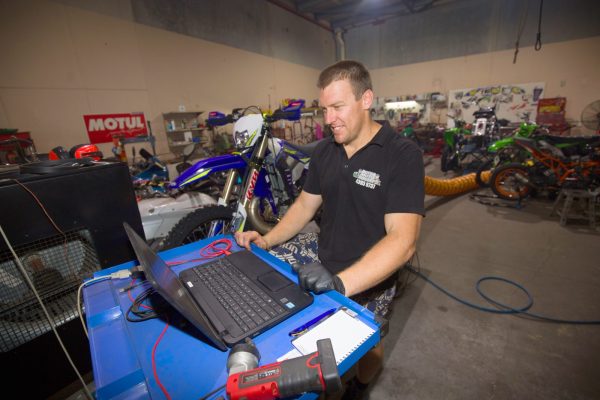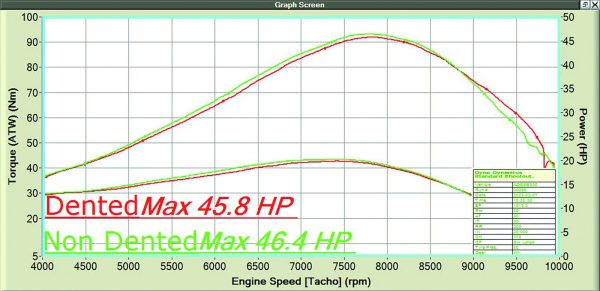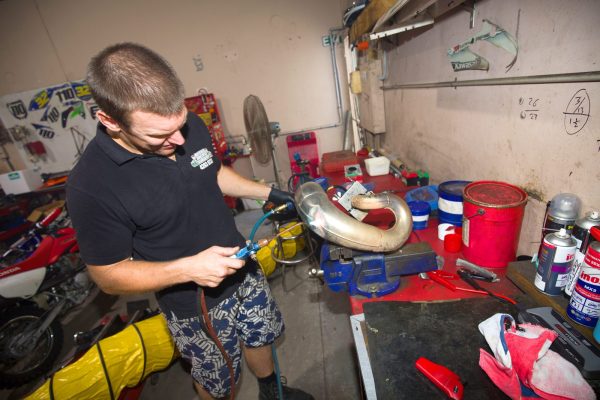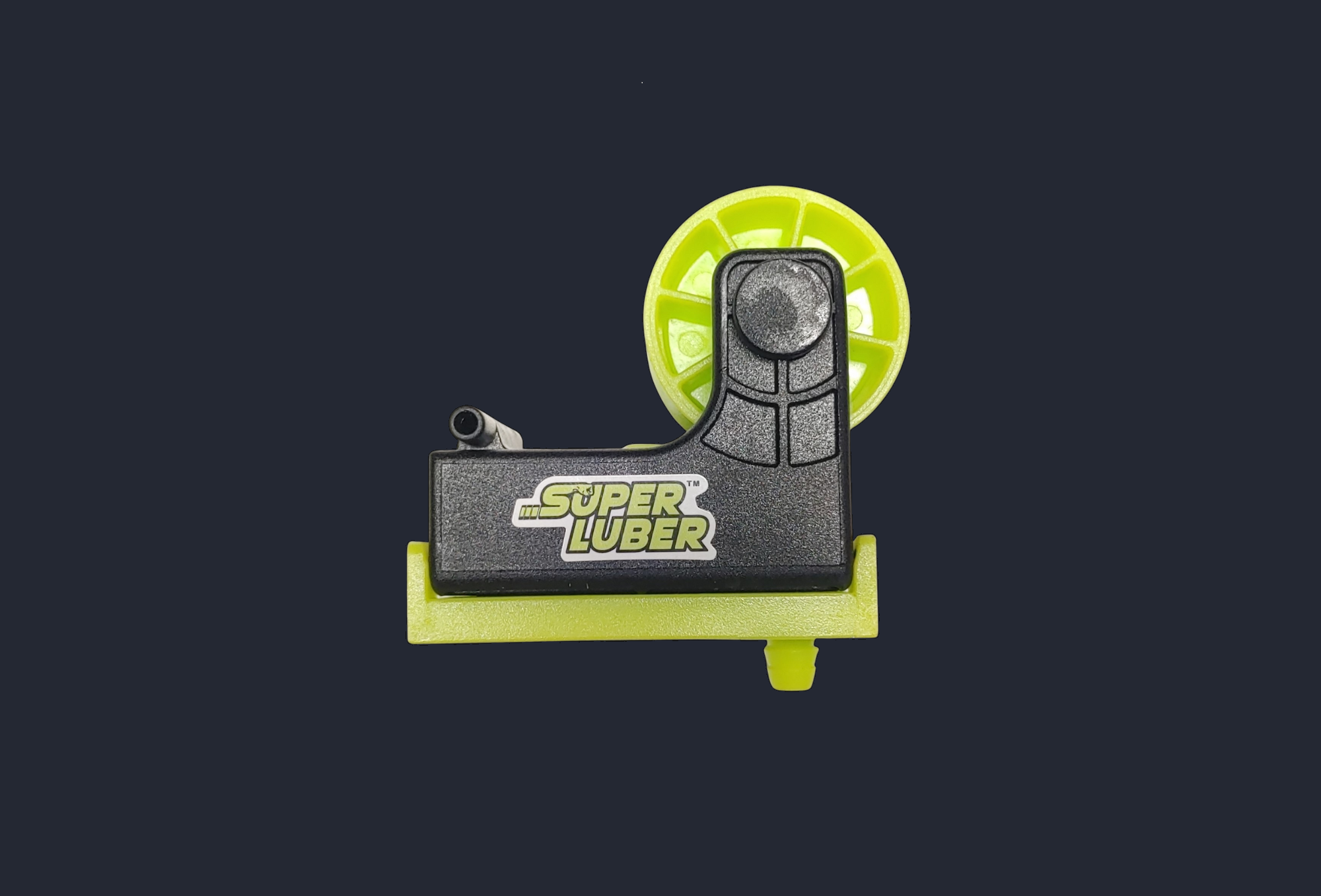Enduro bikes live a tough life. One thing I never want to be reincarnated as is a two-stroke hard enduro bike. Those things get thrashed harder than the Australian Rugby Team and most of those bikes have a pipe with dents in it.

The inception of hard enduro has now made it acceptable to launch your bike up and over ledges without you on it, or to rev up the engine and dump the clutch while you step off the back over logs and rocks. With all this metal crunching carnage a pipe with dents in it is bound to happen. While some run their pipe dents like a badge of honour, others get them fixed.
There’s the old saying “why get it fixed if I’m only going to break it again?” but could you be running your dented up bike around with a significant power loss or does denting up your pipe make no difference at all? We recently had the opportunity to put this to the test when our Editor Mitch Lees stoved in the pipe on his Sherco 300. He felt as if there was a good power loss since denting up his pipe but wasn’t sure if he was just having himself on and it made no difference at all.
The only way we were ever going to settle this was to throw the Sherco on the dyno with a pipe with dents in it and give it a run. Then repair the dent and then run the bike again to see if there was a difference in power or if we just repaired the dent in Mitch’s pipe all for nothing.

What Does The Dyno Say?
After we repaired Mitch’s pipe it was time to refit the expansion chamber back to the Sherco to see what affect the dent had had on the bikes performance. I personally knew there was going to be a difference but just how much of a difference even came as a surprise to me. So many guys are getting around with dented up pipes claiming the dents make no difference at all but the dyno tells otherwise. The problem with the human mind is our opinion and thoughts can often persuade us to believe something that isn’t true.
More times than I can count I have seen bikes that are claimed to be the fastest things ever that produce hopeless horsepower when strapped to the dyno. Just because the owner believes it to be fast doesn’t make it so. The beauty of the dyno is that it gives us hard facts and always tells the truth. The dyno has no bias or opinions it just simply tells us how it is in real terms.
When I strapped the Sherco with the dented up pipe to the dyno it went slower. In fact it made 0.6 horsepower less at peak revs with the dent in the pipe. That in itself is not the big issue.
It’s a 300cc two-stroke that is used for trail riding and spends very little of its time at peak revs. The big problem for a trail bike is the fact that the bike made less torque right through the bottom end and mid-range which is exactly where this bike will be ridden. Between 5000 and 7000 RPM is where the dent affects the 300 the most and this is right about where the revs will be on the trail. This is also right where the biggest difference in horsepower is.
Mitch said himself that he felt that the power of his 300 was affected after he dinged up the pipe and even agreed after seeing the dyno sheet that is exactly where he felt the power was affected. This dent wasn’t the biggest dent on a scale of what we have seen but it certainly was enough to drop the power of the 300 enough to be noticeable. So if you are running around with a banged up pipe then you might be surprised in the results you will get by having it repaired.

Why Does The Dent Affect The Power?
The two-stroke expansion chamber is designed to increase the volumetric efficiency of the engine. In laymen’s terms it increases the power of the motor. The shape and length of the expansion chamber is very important and critical when it comes to timing and its job is to suck gases out of the engine.
The start of the cone shape in the chamber and the end of the cone shape has to coincide with the timing of the engine. They are tuned for a specific RPM range. The expansion chamber first sucks a large quantity of fuel and air through the engine and then the pressure wave bounces off the narrow part of the chamber and pushes the extra fuel and air back into the cylinder at a higher pressure reducing fuel waste and increasing performance.
Any dents in the pipe disrupt these waves as they move back and forth through the chamber. Dents in the first six inches of the pipe are usually more detrimental to the bikes performance as these cause the biggest restriction in the pipe. Dents further through the pipe like in the mid-section or at the widest point of the pipe have been known to change the power curve of the engine but not affect the overall power quite as much unless they are quite severe.
Several small dents can make little to no difference but anything large will absolutely be affecting the overall performance of your two-stroke motorcycle. If you are a serial denter and you have had your pipe repaired several times then it might be time to invest in a pipe guard or alternatively, some riding lessons.
WORDS | MAT BOYD
PHOTOS | MITCH LEES










